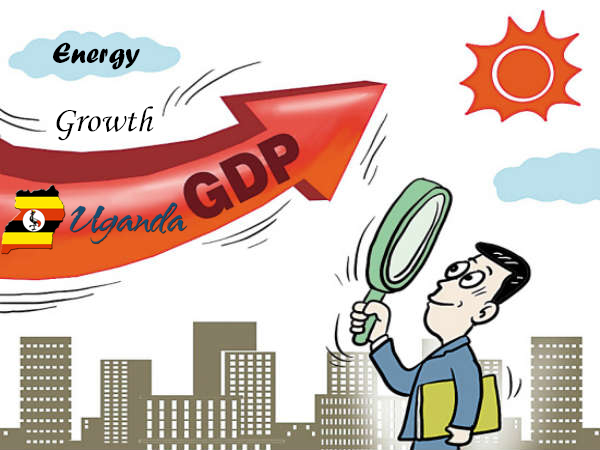
乌干达在过去两个财政年度经济增速放缓后表现乐观,乌干达央行表示乌干达经济将逐步复苏,预计2018/19年增长率为5%至5.5%,中期平均值为6%至7% 。
1月9日世界银行发布最新一期《全球经济展望》,上调2018年全球经济增长预期,表示全球经济将在2018年迎来金融危机后的全面复苏。报告中,世界银行将2018全球经济增速预期调高至3.1%,报告预测,新兴市场和发展中经济体今年将增长4.5%,明年增速将进一步加快至4.7%。
乌干达2016/17财年GDP经济增长率为4.0%,2016/2017财年的预算目标为5.5%。
乌干达央行表示:“矿业预计会刺激中长期的增长。道路和能源,都将刺激乌干达的经济增长。从中长期来看,经济前景会激励私人投资在2018年增长。“
展望未来,汇率稳定将取决于国内外的宏观经济发展,以及政府将如何快速实施石油项目和其他支持性基础设施的公共投资。政府将继续采取措施,通过促进有竞争力的汇率和建立外汇储备,确保乌干达与世界其他国家相比,地位稳定和可持续发展。
BoU Projects Economic Growth at 5.5%
After marking slower growth rate in the last two financial years, the Bank of Uganda is optimistic and says Uganda’s economy is projected to recover gradually, with growth projected at 5 to 5.5% in 2018/19 and averaging 6 to 7 % in the medium term.
The Central Bank explains that this growth is supported by projected growth in agriculture, due to predicted good weather but also partly as a result of government interventions in terms of seed distributions, irrigation schemes either in progress or in pipeline, and strong demand for agricultural produce in the region.
The economy grew at a revised rate of 4.0 % FY 2016/17, against an earlier estimate of 3.9%.
However, the revised growth for FY 2016/17 is lower than 4.7% recorded in FY 2015/16 and the FY 2016/17 budget target of 5.5%.
In an interview with Daily Monitor on Monday, the executive director of research BoU, Dr. Adam Mugume, said: “The service and manufacturing sectors are also projected to recover, in part supported by the current stimulative monetary policy.”
He added: “The mining sector is also projected to spur growth in the medium to long term. These combined with oil sector that is likely to dominate the Ugandan economy atleast in terms of foreign currency in-flows; youthful labour force; gradually improving infrastructure, both road and energy, should stimulate Uganda’s economic growth going forward. It is these prospects in medium to long term that should create incentives for private investments for private investment in 2018 and also in outer years.”
In terms of price stability, Dr Mugume said inflation in 2018 is projected to stabilise around 5% given the outlook for good crop harvest and stable exchange rate.
He added that since inflation is well anchored around the medium-term target, and economic growth, and economic growth though recovering but is still below the potential, there would be no justification for increase in interest rates, except if fiscal policy became overly expansionary resulting in heavy domestic borrowing.
In the foreign exchange market and the state of Uganda’s currency, the shilling exchange rate has largely been stable with trade weighted exchange rate depreciating by about 2% in 2017 compared to 2016.
Overall in 2016 the shilling depreciated by 5.5% against the US dollar.
Dr. Mugume explained that the stability of the stability of exchange rate is partly reflective of stable macroeconomic environment, with overall inflation averaging 4.4% in 2017.
“Fiscal policy was also more prudent in 2017, with less domestic borrowing. Balance of payment was favourable with exports receipts increasing by 15% while imports growing 7.5% in 12 months to November 2017 compared to the same period in 2016,” he said.
He added: “ These macroeconomic developments coupled with relatively less noise in 2017 compared to 2016, resulted in relatively stable exchange rate.”
Going forward, Dr. Mugume explained that exchange rate stability will be hinged on macro economic developments, both domestic and external, as well as how fast the government will implement the public investments in oil sector and other supportive infrastructure.
“Exports are projected to continue growing, led by coffee exports, which increased by 59% in 2017. However, as domestic aggregate demand strengthens, coupled with rising of international oil prices, total imports will grow much faster, which could hinder strengthening of the shilling,” he pointed out.
The ministry of Finance, in the National Budget Framework 2018/2019 in the section of the Macroeconomic Policy Framework says the overall macroeconomic goal is to accelerate and sustain inclusive economic growth while maintaining macroeconomic stability and debt sustainability.
The ministry says the macroeconomic strategy therefore is to enhance the impact of public investment on growth through implementation of policies that foster efficiency in public investment, attract and crowd in private investment, increase domestic revenue mobilization efforts, and achieve low and stable inflation.
“In addition, government will continue with measures to ensure that the external position with the rest of the world is stable and sustainable, through promoting a competitive exchange rate and building on the external foreign reserves..,” the NBFP states.
